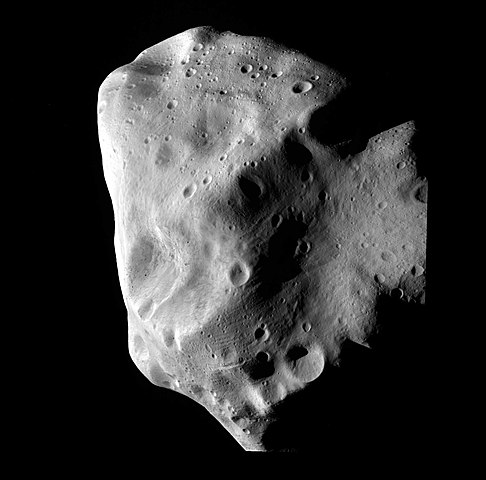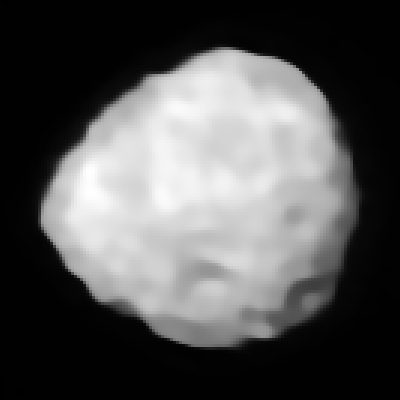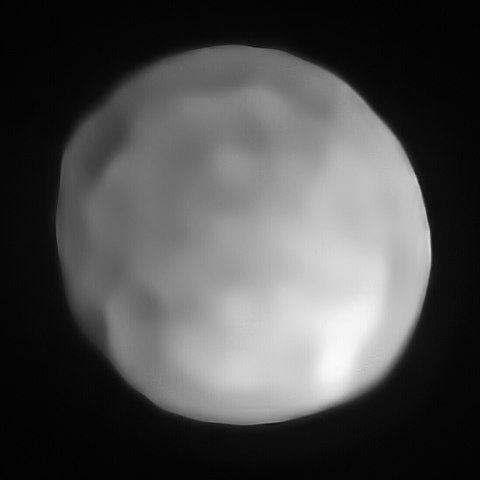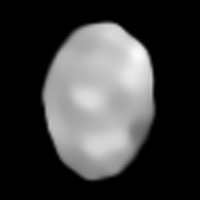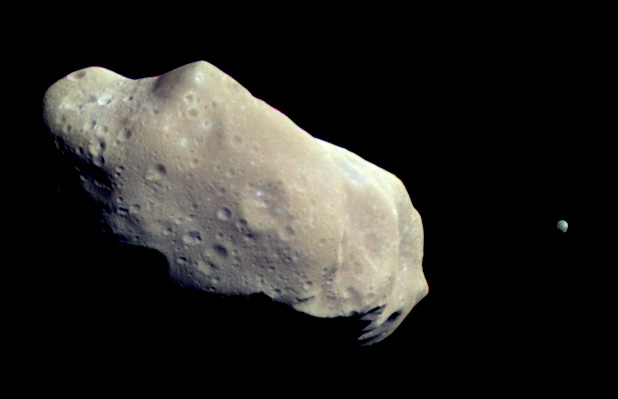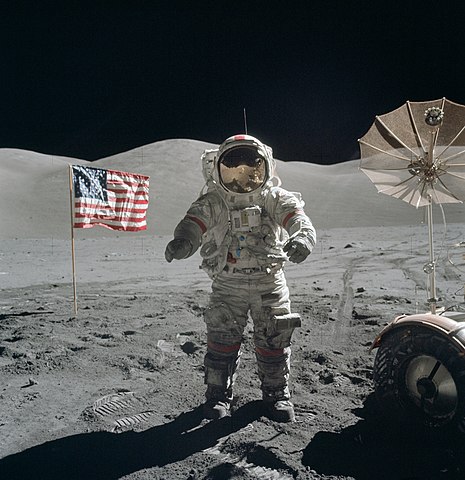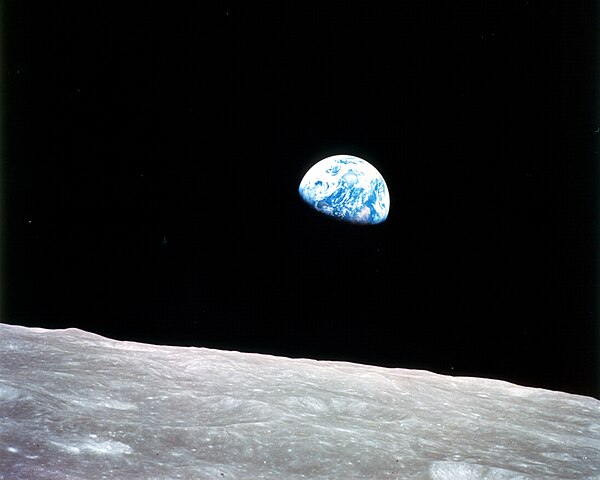1 day / second
0.5 AU
21 Lutetia
Asteroid
A large main-belt asteroid about 100 kilometers in diameter that was visited by the Rosetta spacecraft in 2010, revealing a heavily cratered, irregular surface with regions of varying geological age.
Key Facts
orbital regime | Asteroid Belt |
learn more | Wikipedia |
mass | 1.7000e+18 kg |
radius | 49 km |
hill radius | 20,055 km |
semi-major axis | 2.435 AU |
eccentricity | 0.163 |
inclination | 3.064º |
longitude of the ascending node | 80.867º |
argument of periapsis | 249.997º |
orbital period | 3.8 years |
sidereal rotation period | 8.166 hours |
axial tilt | 96º |
surface gravity | 0.005 g |
discovery date | November 15, 1852 |
discovered by | Hermann Goldschmidt at the Paris Observatory |
name origins | Named after Lutetia, the ancient Roman name for Paris |
dimensions | 96 km diameter |
albedo | 0.221 |
material composition | X-type and M-type asteroid, suggesting metallic composition |
asteroid group | Located in main asteroid belt |
Spacecraft Visits
Rosetta
Flyby
Launched in 2004, visited in 2010
Rosetta flew within 3,162 kilometers of asteroid Lutetia on July 10, 2010, capturing detailed images of its cratered surface and revealing it to be one of the largest and densest asteroids visited by a spacecraft.
